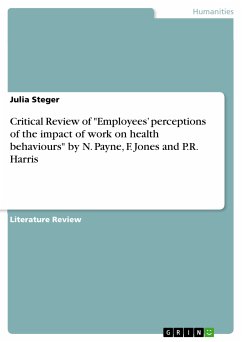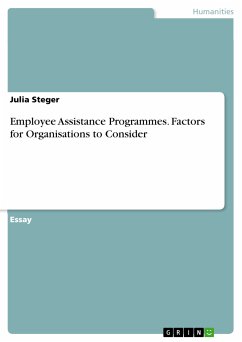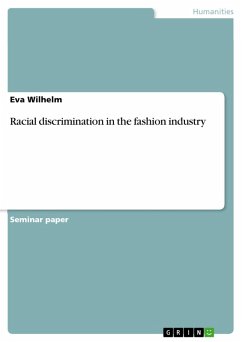Literature Review from the year 2015 in the subject Ergonomics, grade: 2,3, University of Nottingham, language: English, abstract: This paper gives a critical appraisal of the work of Payne et al. It shows that the sample and study design are limited by different sampling errors like selection bias or participant effects. The study results are acknowledged and brought into context. Finally the paper gives recommendations of how the study could have been improved. Payne at al. conducted semi-structured interviews with twenty-four employees of the UK site of a multinational company acting in the computer hardware and software industry (main areas of work: design, marketing and sales). The researchers obtained information about the employee's understanding of four defined health behaviours (namely smoking, drinking alcohol, exercise and diet) and how they are affected by their work. They identified four categories as the main themes affecting health behaviours, which are work environment, business events, being busy at work and work stress with various sub-categories. As there already is a broad range of both qualitative and quantitative research relating to work and health, which is a circumstance the authors are aware of, they list a number of reasons to justify the study. They point out that the study is able to provide a complete picture of the topic by the range of factors and key behaviours it observes, the bottom-up approach as well as looking at both positive and negative impacts of work
Dieser Download kann aus rechtlichen Gründen nur mit Rechnungsadresse in A, B, BG, CY, CZ, D, DK, EW, E, FIN, F, GR, HR, H, IRL, I, LT, L, LR, M, NL, PL, P, R, S, SLO, SK ausgeliefert werden.









